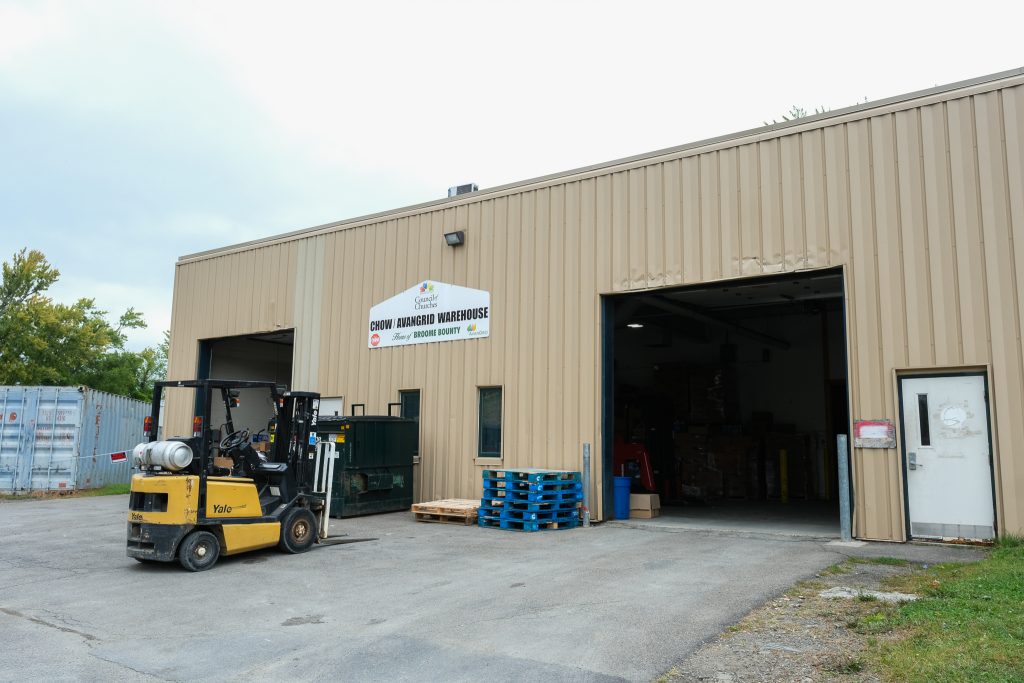The Broome County Food Council launched its new “Food Access Plan” last week, detailing five strategies to ensure sustainable healthy, affordable food access across Broome County.
The plan, organized in collaboration with the Food Bank of the Southern Tier, is designed to address food insecurity and improve emergency food services across the county. Work groups, council members and a Steering Committee collaborated to create region-specific initiatives based on data collected over 21 months. The plan outlines five key strategies to improve food access in the county and nutrition in early childcare programs while documenting income and transportation’s effects on food access.
Theresa Krause, the Food Bank’s food council coordinator, said the council, established in 2019, evolved from the Child Hunger Task Force, providing free summer meals to eligible students and running educational programs promoting healthy food choices. During the COVID-19 pandemic, the council became an emergency food resource and distributed food throughout the county. The council reconvened in spring 2021 to establish the Steering Committee and the four work groups.
“When I came in, I went to key organizations, members of the council, and I said, ‘What do you want,’ ‘Why do we have a Food Council?’” Krause said. “And they said, ‘We want a food access plan for the county. We need to find the underserved populations and we need a food access plan for them. And so as it developed through — and it’s been over two years — I’ve been in this position. That is what we’ve been working on.”
Each of the plan’s five key strategies was organized into two-year action plans. The Steering Committee is also conducting a food systems analysis overseen by approved consultants to gather data on countywide metrics. By 2026, the committee hopes to develop a complete Food Systems Plan for Broome County to promote nutrition and sustainability.
Les Aylesworth, the director of the Community Hunger Outreach Warehouse, is on the access plan’s Steering Committee.
“We supply over 115 emergency food programs with food at no cost,” Aylesworth wrote. “We also opened the Greater Good Grocery on the Northside of Binghamton to help fill a void in that food desert. Not to mention our daily work in food recovery. Needless to say we have lots going on!”
Three Binghamton University students in a digital and data studies class taught by Melissa Haller, a lecturer and coordinator for the digital and data studies minor, assisted in analyzing survey responses gathered by the Food Council. The survey, which garnered about 1,300 respondents, revealed that two common barriers to food access were income and transportation. One student found that food pantry hours also pose an issue, especially in Chenango Forks, which reported the “highest difficulty with site hours.”
Alyssa Weber, the undergraduate supervisor for the University Food Pantry and a senior double-majoring in geography and environmental studies, said that from her experience, county budgeting often overlooks facilities like food pantries.
“I know we’ve implemented similar initiatives to fight food insecurity, for example having the dining halls package up their leftover food and bringing the meals to the food pantry so students can access meals for free,” Weber wrote. “The city of Binghamton has had food deserts specifically on the Northside [for] some time, so I would love to see the county work to improve those areas.”
Aylesworth highlighted the severity of food insecurity in Broome County, citing a recent New York State Department of Health report that found nearly a quarter of adults in the county are food insecure. He also referenced data from the state comptroller’s office, which revealed a 53 percent rise in childhood poverty in Broome County over two years — the fastest rate in the state.
Krause said BU students who want to get involved should consider joining the council.
“That is something Binghamton University has taken years to develop and is doing a wonderful job in creating this atmosphere of passion and caring for where the University is in Broome County,” Krause said. “So that’s what I encourage students to do.”



